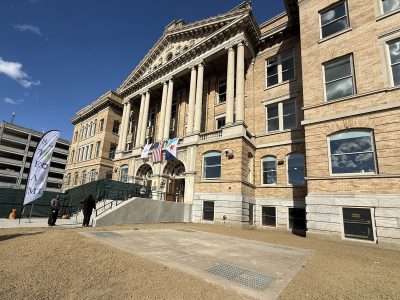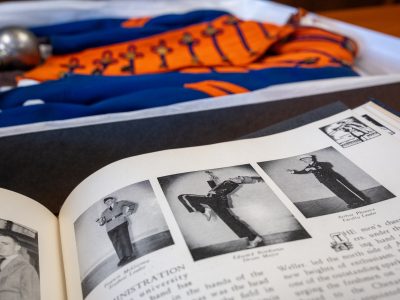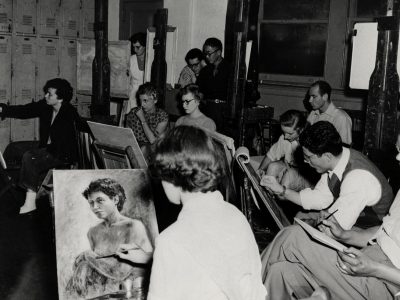Art Historian’s Simple Question Transforms Student Perspectives
Art historian Alexander Nemerov stood waiting before Helen Frankenthaler’s “Untitled, 1979” with 11 graduate students in the Syracuse University Art Museum study room. He opened the session with a simple invitation for students to share their observations—not looking for the right answer, but any answer at all. When the first student broke the silence, Nemerov didn’t lecture. Instead, he asked another question.
What followed wasn’t a lecture but a conversation—one that would leave the art history students reconsidering not just how to approach modern art, but how to imagine their own futures in the field. The visit exemplified what makes graduate education transformative: intimate engagement with distinguished scholars who challenge students to think in new ways.

Nemerov Arrives
Nemerov holds an acclaimed career in art history and is the Carl and Marilynn Thoma Provostial Professor in the Arts and Humanities at Stanford University. Nemerov authored the biography “Fierce Poise: Helen Frankenthaler and 1950s New York” and visited Syracuse to deliver the keynote talk for the Syracuse University Art Museum’s latest exhibition, “‘What If I Try This?’: Helen Frankenthaler in the 20th-Century Print Ecosystem,” curated by Melissa Yuen.
His keynote, titled “Do You Know What It’s All About?”: Helen Frankenthaler, Clement Greenberg, and a Painting at Syracuse, was organized by the Syracuse University Art Museum. It was sponsored by the Syracuse University Humanities Center and was part of their Syracuse Symposium: Creativity program. Additional sponsors included the dean’s office of the College of Visual and Performing Arts; the departments of art and music histories, women’s and gender studies, and English in the College of Arts and Sciences (A&S); and the Goldring Arts, Style and Culture Journalism Program in the Newhouse School of Public Communications.
The Close-Looking Session
Nemerov’s visit began with a close-looking session attended by graduate students in art history, arts journalism and museum studies. Hung on the wall before them was the subject of the close-looking session: “Untitled, 1979.” The painting was gifted to the University by alumnus Clement Greenberg ’31, one of the most important art critics of the 20th century, who was instrumental in launching Frankenthaler’s career.
Nemerov had a keen interest in the painting as well, considering Frankenthaler herself originally gifted the work to Greenberg whom she shared a romantic relationship with—a subject explored in “Fierce Poise.”

For the students expecting a lecture from the distinguished scholar, Nemerov’s question about what they observed caught them off guard.
“It felt like he was trying to break us out of our grad school imposter syndrome,” says Em Spencer, an M.A. student studying modern and contemporary American art in A&S.
The session began mostly silent, before prodding by Nemerov. Then one by one students began to speak up and make insightful observations relating intentionality in this painting to her previous works, the tension present in the work and even how Frankenthaler might have felt working on the painting.
For Katie Vogel, an M.A. student studying Renaissance and medieval art through the Florence-based art history program in A&S, she initially felt somewhat out of her depth looking at modern art. This feeling soon faded away because of the openness in the room fostered by Nemerov.
“It was really wonderful to work through these ideas with other people in the room and by the end, any sort of sense of like ‘oh, the thing that’s going to come out of my mouth isn’t going to be the most intelligent thing’ had very much dissipated and Nemerov definitely cultivated that environment,” Vogel says.
Impact on Students
What shifted in that study room wasn’t just how students looked at a painting, but how they saw themselves in their fields of study.
Vogel had come from Pratt Institute with a background in creative writing and performance studies, and with it, questions about whether her approach belonged in the formal study of art history. By the end of the session, something had changed.
“It was affirming to have somebody who is clearly very accomplished and sort of embodies these different approaches to scholarship and a more creative lens,” she says, reflecting on Nemerov’s background in English literature and nontraditional approach. “To see that reflected back, was very affirming.”
Visitors can experience “‘What If I Try This’?: Helen Frankenthaler in the 20th-Century Print Ecosystem” through Dec. 9.



